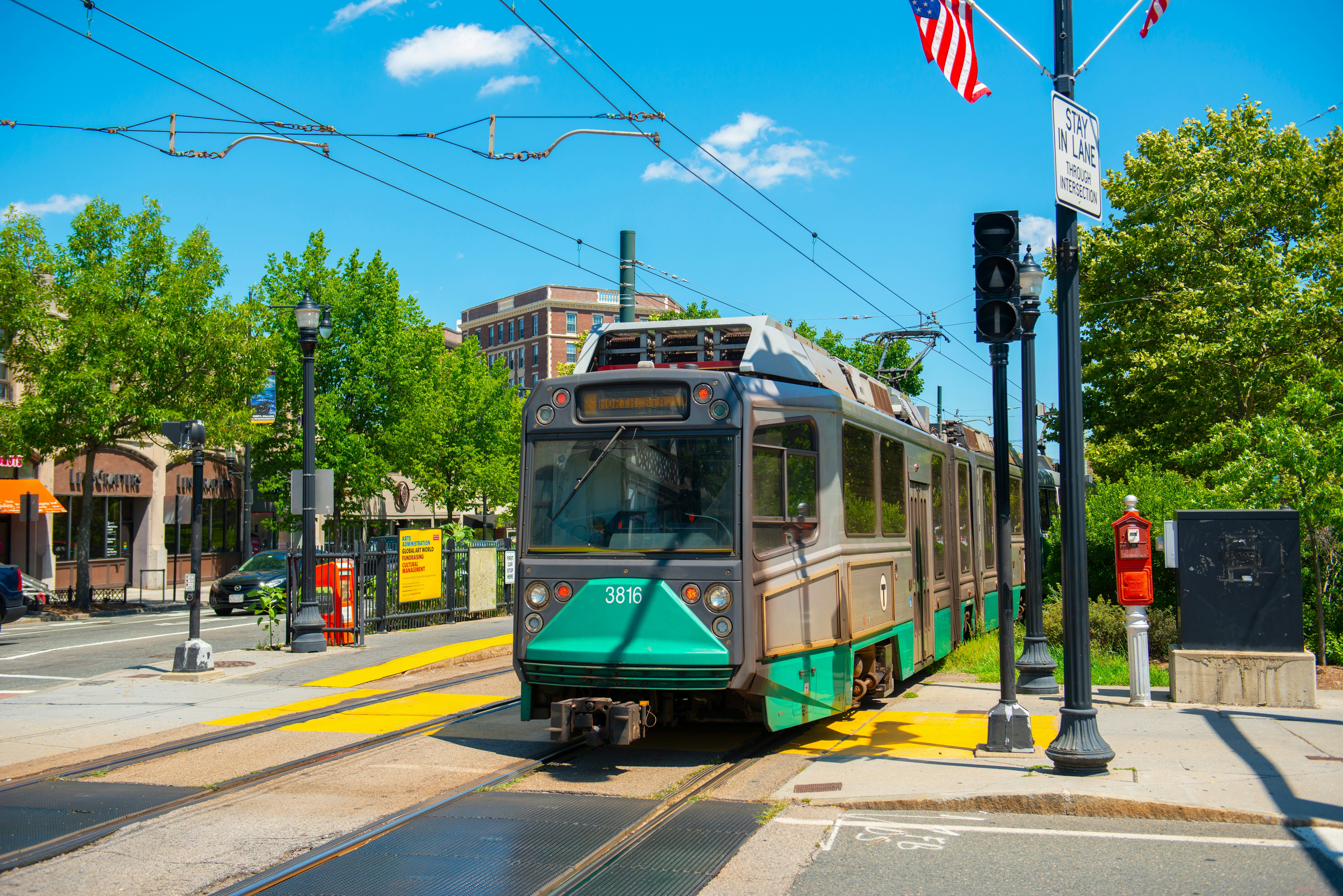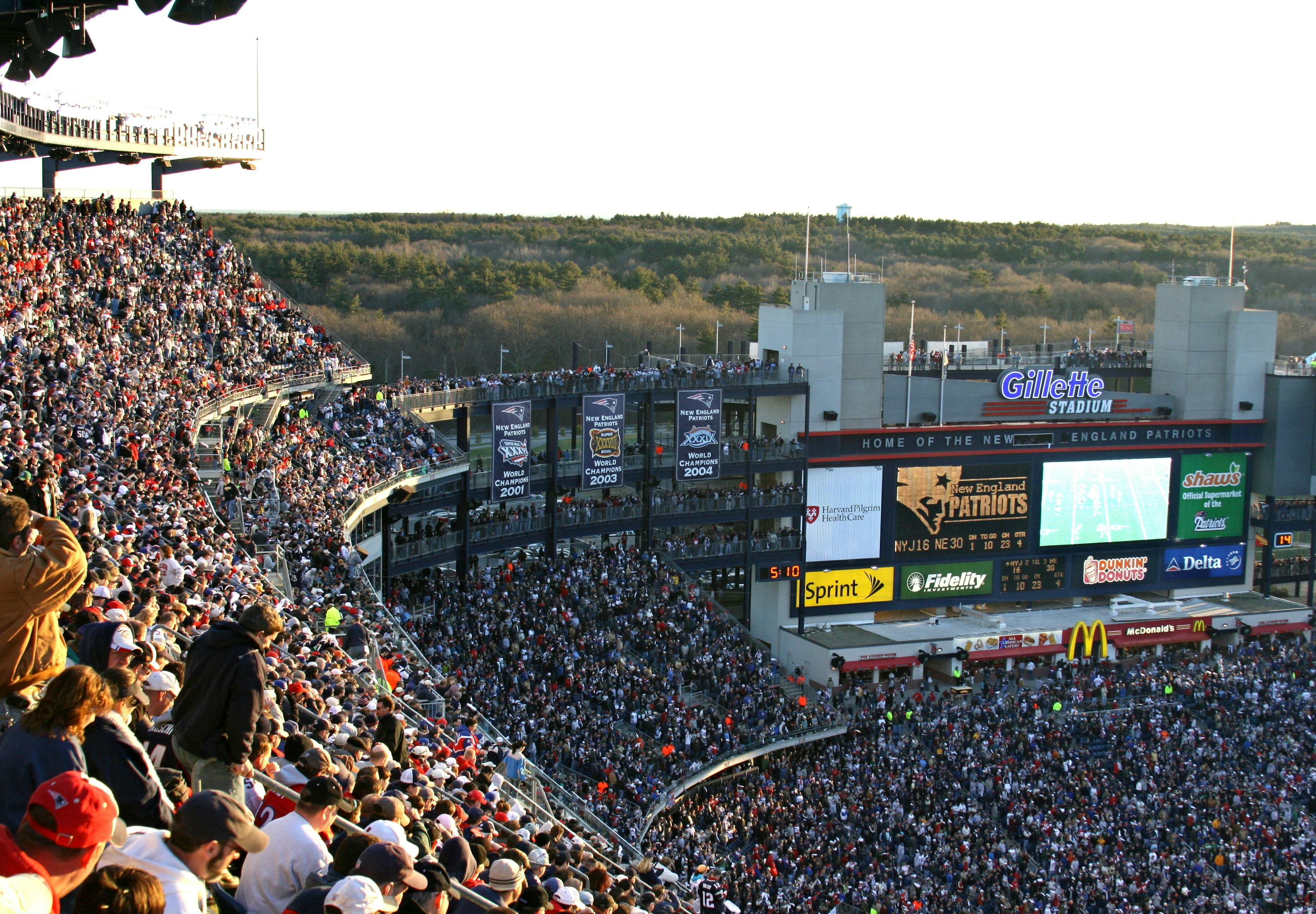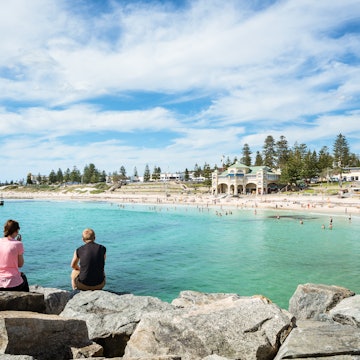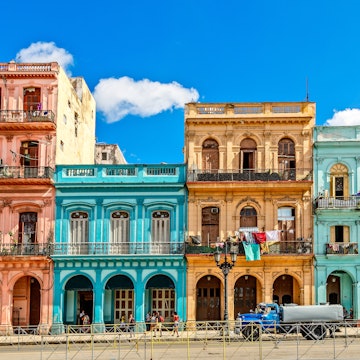

Longfellow Bridge, Boston, MA. Wangkun Jia/Shutterstock
Boston is a compact city with ample green space.
Most of the sights and attractions are located within an area that is only about 3 sq miles, so Boston is largely navigable on two feet (or two wheels). But when the weather is bad or the distance is just too great, there are several options for getting around, whether by subway, bus or boat.
Broadly speaking, you don’t need – and probably won’t want – a car during your time in Boston. Parking is limited and traffic and navigation can be a nightmare. If you happen to have one (eg, if you drive here), your best bet is to find a safe parking place and leave your vehicle there for the duration of your stay, though it may come in handy for trips out of town.

Be like Charlie and ride the T
The most versatile and user-friendly form of public transportation in Boston is the subway. And here in Boston, we call it the T, short for the MBTA (Massachusetts Bay Transportation Authority). The subway system looks sort of like the spokes of a wheel, with four lines (red, green, orange, blue) radiating out from the main stations in Downtown Boston. Note that the red and green lines split into multiple branches outside the city center. To make sure you get on the right train, pay attention to its final destination, which is posted on the exterior windows.
The T runs from about 5am to about 1am. The fare is US$2.40, regardless of how far you go or how many transfers you make. CharlieTickets are a good option for visitors. You can buy them at the electronic kiosks that are located in each station, load whatever amount you want/need and reuse for multiple rides; the appropriate amount will be deducted, whether you’re riding the bus or the T. There are 1-day and 7-day passes if you’re planning to use the T often (see below for more info). You can also use Google Pay, Apple Pay or contactless debit/credit cards.
The CharlieTickets and CharlieCards are named for a 1959 song by the Kingston Trio about a man named Charlie who could not get off the T because he did not have the five-cent exit fare. “He may ride forever ‘neath the streets of Boston. He’s the man who never returned.”
Take the silver line to/from the airport
The silver line is not a subway line, but rather a “rapid transit” bus system with dedicated travel lanes. It’s part of the MBTA system, and there are four different silver-line routes originating at South Station. The one that is the most useful for travelers is the SL1, which cuts through the Seaport District, then traverses the Boston Harbor in a dedicated tunnel and goes to Logan International Airport, stopping at each terminal.
The silver line fare is US$2.40; it connects to the subway system, which means you can transfer without paying an additional fare.
If you're traveling from Logan Airport into downtown Boston, the silver line is free, with a free transfer to the red line at South Station.

Catch sea breezes and harbor views on a ferry
Boat rides are part of the fun when you’re visiting a waterside city. They will probably not be your primary means of transportation in Boston, but they are useful for a few destinations, primarily Charlestown and Logan Airport.
The MBTA operates ferries from Long Wharf in Boston to the Charlestown Navy Yard (US$3.70) and to Logan Airport (US$9.75). There are also water taxis that run between the airport and several waterfront destinations. From the airport terminal, take the free shuttle (no 66) to the dock. Use your CharlieTicket for the MBTA ferries, or purchase tickets from the booths at the docks. The airport ferry is convenient if you’re staying near the waterfront in Downtown Boston or in the Seaport District. It may not be quicker than the silver line, but it’s a lot more scenic. This option, however, may be less appealing in bad weather.
Take the bus to far-flung destinations
There are some places that the T just doesn’t go, especially when it comes to outlying neighborhoods. That’s when the bus comes in. Also operated by the MBTA, buses can be difficult to use if you don’t know the routes, but following a mapping app will help. The MBTA website also has an interactive trip planner, as well as schedules with live updates for specific buses, so you know how long you’re going to have to wait.
You can use your CharlieCard to pay the US$1.70 bus fare. If you don’t have one, you must pay in cash. Aim to have the exact amount because no change is given.
Currently, the majority of buses are hybrids, with several hundred diesel buses still in active use. The MBTA has recently begun to implement a bus electrification plan, with the goal of replacing the entire fleet with battery-electric buses by 2040.

Ride BlueBikes for ultimate flexibility and fun
One transportation option wins the prize for geographic coverage (not to mention eco friendliness). BlueBikes is Boston’s bike-share program, with thousands of bikes docked at more than 400 stations around Boston and surrounding towns. Riders can pick up a bike at any station and deliver it to any station at the end of their trip.
A single trip is US$2.95 for a 30-minute ride, plus US$4 for each additional 30 minutes. Another option – better for long, leisurely rides – is the Adventure Pass, which is US$10 for unlimited rides (up to two hours each) for 24 hours. Download the mobile app or purchase your pass at any BlueBikes station. The app also has a map of all the stations, as well as suggested riding routes.
BlueBikes is a fun, convenient and somewhat adventurous way to get around Boston. That said, cycling in the city is not for the faint of heart, especially Downtown. Take advantage of bike lanes and off-road biking trails whenever possible.
If you’re in a hurry, order a ride share or flag a taxi
Lyft, Uber and good old-fashioned taxi cabs are ubiquitous around Boston. This can be a good option late at night, in bad weather or if you don’t have the patience to wait for a bus.

Reaching the city's stadiums
Boston's Gillette Stadium will be renamed Boston Stadium for the upcoming 2026 FIFA World Cup tournament. If you're visiting the city and plan to catch at least one of the seven matches played in Boston during the tournament, plan to take the bus to the stadium. And, if you're not in town for the World Cup, Gillette Stadium is also home to the New England Patriots. For Boston Red Sox baseball games, Fenway Park is the place to be: take the green line to Kenmore Square.
Accessible transportation in Boston
The MBTA subway trains are accessible to wheelchair users; however, not all of the train platforms have elevators from the street level, especially on the green line. All MBTA buses are wheelchair accessible. The MBTA offers assistance to disabled riders via an online trip planner (click “Wheelchair accessible trip”) or by phone.
Transportation passes
The MBTA offers various passes that may be useful if you plan to ride the T (and other mass transit) a lot during your visit. A one-day pass – covering unlimited travel for 24 hours – is US$11. A seven-day pass is US$22.50. The passes include the T, the silver line, the bus and the ferry, as well as some rides on the commuter rail. Buy passes at the electronic kiosks at any T station.
















